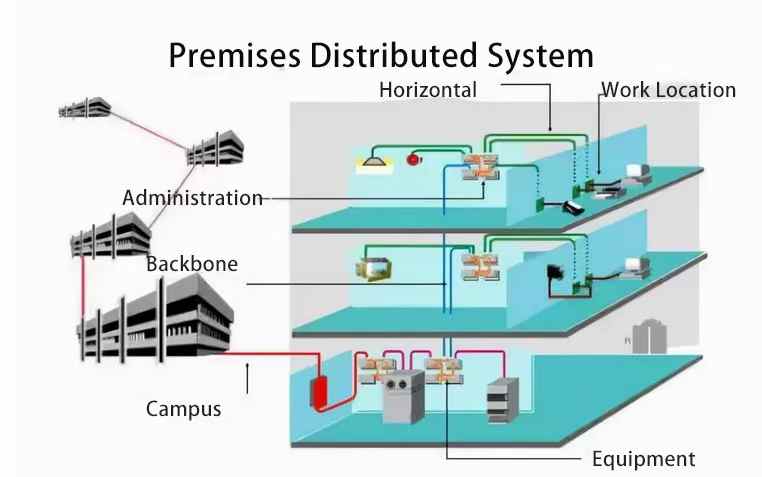cables and wires Q&A(2) - Network cabling
Premises Distributed System, or PDS for short, the Network cabling is mainly used in the construction industry, such as building construction in the construction of weak power engineering, including network system cabling, closed-circuit television system cabling, building intelligent intercom system cabling, fire system cabling, intelligent visual door police system cabling and so on
How to design a good network-cabling? Follow the following principles:
Standardization, advancement, practicality, flexibility, compatibility, safety and reliability, expandability, economy
1) WORK LOCATION ,it consists of the cables (or cords) that connect the end devices to the information sockets, and it includes the assembly cords, adapters, and extension cords needed to connect and bridge the end devices to the I/Os.
2)Horizontal
the Horizontal subsystem is the part of the overall cabling system that extends the trunk subsystem wiring to the user work area. The typical horizontal subsystem cable count is 4 twisted pairs, which supports most modern communications equipment, and fiber optic cables can be used when certain higher bandwidth applications are required.
3)Backbone(Vertical)
the Vertical trunking subsystem refers to the system consisting of cables and ancillary facilities from the ground floor to the top floor of the building between the weak electricity room. The system as the backbone of the integrated wiring system, mainly connecting the integrated wiring system equipment and management subsystem floor distribution box
4)Administration
The administration subsystem consists of cross-connect and interconnect patch panels, information outlet patch panels, and associated patch cords. Administration points provide the means of connecting to other subsystems. Cross-connect and interconnect allow you to locate or relocate communication lines to different parts of the building to make it easier to manage them.
5)Equipment
The equipment subsystem consists of patch cables and adapters in the equipment room, which interconnects the central main distribution frame with various different devices, network equipment and monitoring equipment, etc. with the main distribution frame. Usually the subsystem design and network-specific applications, relatively independent of the general structure of the cabling system.
for more details, welcome to visit our website or youtube channels for more product information,
and cable & wires updates tech-sharing information.
https://www.youtube.com/@yuedao09cable/shorts
https://cloudtopcable.com/
Leave a Reply
- HYA 50×2×0.4 Communication Cable: Reliable Solution for Guangzhou Surveillance Systems
- Why Does Your EV Stop Charging Suddenly? Let’s Troubleshoot!
- Yuedao Intelligent Empowers Guangzhou Metro to Set World Record for Fastest Subway Speed
- Become Our Local Partner - Expand Your Market with High-Quality Cables & Wires
